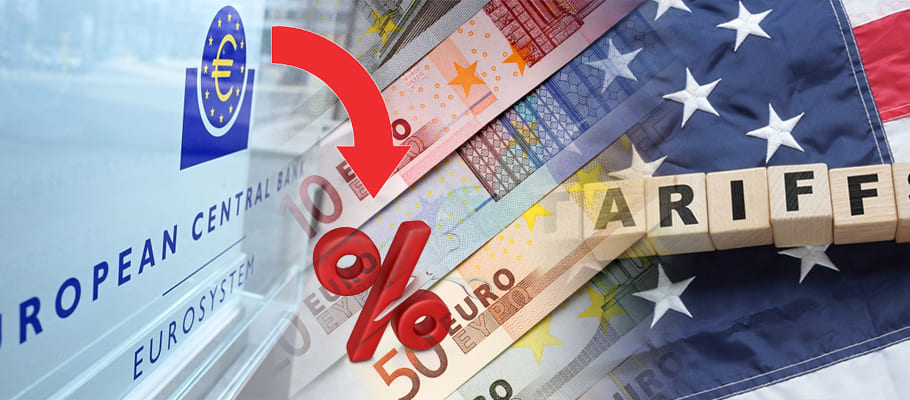
Published: April 2nd, 2025
New lending data published by the European Central Bank (ECB) this week suggests Frankfurt may be able to avoid an interest rate cut in April.
Figures on money flowing through the Eurozone economy suggest European banks are lending more in response to signals of an uptick in investment activity.
The ECB's narrow M1 measure, which captures cash and overnight bank deposits, rose by 3.5 per cent in February – the fastest pace of growth seen in more than two years. The M1 is the Eurozone's basic metric for money supply.
A note to investors from ING Bank's forex strategy unit said Eurozone money and lending growth ‘both gained pace in February, strengthening the position of those ECB policymakers who want to pause interest rate cuts this month.’
Pushing hold on the rate cut cycle could be supportive of Eurozone bond yields and help stabilize EUR exchange rates. ING economists said the upbeat signals confirm that Frankfurt’s interest rate cuts are having the desired effect on growth.
‘As lending growth speeds up and stagnation appears to be coming to an end, we see an improvement in monetary conditions. Noting the careful pace, however, ING added that ‘it's clear the ECB is not actively stimulating the economy.’.
In the US, economists at Wells Fargo raised the bank's forecast for Eurozone growth, pointing to a steady flow of positive developments in recent weeks.
In late December 2024, the Euro-Dollar rate came under pressure after comments in the financial press by European Central Bank (ECB) President Christine Lagarde chilled demand for the single currency.
She told Bloomberg on Monday 30th December that she was optimistic Frankfurt was on course to hit its two percent inflation target. The ECB, Lagarde said, was ‘approaching the point where we have brought down inflation to our medium-term goal of two per cent.’
An analysis by Bank of New York (BNY) said Lagarde's comments supported the view that falling inflation would free the ECB's hand to out-cut other G10 central banks in the coming months, almost guaranteeing that EUR will stay under pressure, especially against the Greenback.
A week earlier, the US Federal Reserve signaled it wanted to cut interest rates only two times next year against a background of resurgent economic growth. Despite the upbeat sentiment, USD dipped after publication of under-expectation PCE inflation figures, which took the air out of the Dollar's upward ascent.
The core PCE measure indicated US inflation had risen by 0.1 per cent month-on-month in November, roughly half the 0.2 per cent consensus forecast. Year-on-year inflation remained stable at 2.8 per cent. Markets, however, were looking for an uptick to 2.9 per cent.
BNY analysts said this prompted some investor relief and a selloff in USD, which needs a steady supply of hawkish data to keep its rally going. Data prints that showed at- or below-consensus readings would result in pullbacks.
In October 2024, an analyst note from investment bank Jefferies said a dip in the Euro to Dollar exchange rate below its 200-day moving average marked a significant deterioration in the pair's technical outlook.
The firm's forecast model relies on the 200-day displaced moving average (DMA), which positions the pair in a multi-week downtrend when below, and an uptrend when above.
‘The 200 day moving averages can be key long-term milestones where fiat currencies sometimes get caught and stay above or below their moving averages for extended periods.’
In mid-October the 200 DMA was located at 1.0872, with signals suggesting the technical level had become a ceiling, even as rebounds seen the previous week attempted to rise above it.
The remainder of the month saw EUR/USD wallowing below the 200 DMA though there were multiple retests of the seven-day level.
The single currency was under pressure as more and more traders concluded that the European Central Bank (ECB) would cut interest rates more deeply, and at a more aggressive pace, than the US Fed.
That sentiment had already impacted Eurozone bond yields negatively versus the US. In early October Frankfurt responded to Eurozone's softening inflation readings by reducing interest rates by another 25 basis points.
In November 2024, multiple ECB speakers, including bank President Christine Lagarde, started dropping hints about what the policy future would hold for EUR. Upside risks prompted some ECB members to attempt to lower expectations for the rate of future cuts, especially given the bank's recent aggressive footing.
EUR reached a peak of 1.1174 USD in late August 2024 and was up 2.61 per cent against the USD for the month. While momentum had shown signs of slipping, FX strategists at Convera said the EUR/USD rate could still test the 30-month range close to USD 1.12 before the month concluded.
EUR had been riding high since release of the Federal Reserve's July-end policy meeting minutes on Wednesday, 21st August. The minutes revealed that a number of Fed policymakers were ready to cut rates then and there, raising expectations for a September reduction and additional cuts in the following months
In a note to investors, Convera wrote that aggressive bets on Fed easing ‘(had) been overshadowed by economic weakness in the Eurozone. EUR's August rally has been steady and consistent, pushing it to a one-year high against USD.’
Over the previous three weeks, expectations for subsequent Fed rate cuts grew faster than the schedule expected from Frankfurt central bankers, leading to a divergence in rate expectations that was expected to pull the Dollar down against the Euro.
Convera said that traders betting on EUR/USD Euro-Dollar would need to ask themselves how long the situation could continue. The risk for EUR bulls was that the trade might have already run its course, raising the prospect of a sharp pullback.